5 Workouts You Should Be Doing Regularly in Your 60s

Prioritizing regular exercise in your 60s is crucial for maintaining vitality and overall well-being. Physical activity tailored to this stage of life offers many benefits, supporting physical health, emotional resilience, and cognitive function. I've rounded up five of the best workouts to do regularly in your 60s.
To ensure you're getting the most out of your workouts, it's essential to incorporate a variety of exercises that target strength, balance, flexibility, and cardiovascular health. These routines help preserve independence and mobility and contribute significantly to a sense of fulfillment and joy in daily life.
Here are five workouts that should become staples in your fitness routine as you navigate your 60s. These exercises are carefully selected to address this age group's specific needs and challenges while ensuring safety and effectiveness. Whether you prefer exercising at home or in a gym, these routines promise to invigorate your body and mind, empowering you to embrace this stage of life with confidence and vigor.
Keep reading for the five best workouts to do regularly in your 60s. And when you're finished, don't miss the 6 Best Pilates Exercises to Improve Your Balance & Coordination.
Workout #1: Glute Bridge
This list of workouts to do in your 60s kicks off with glute bridge variations. Prioritizing workouts that target your glutes can have significant functional and preventative benefits. The glute muscles are crucial in various movements, such as squats, deadlifts, lunges, and core exercises. Incorporating glute-focused exercises into your routine enhances your overall strength and stability and mitigates the risk of low back and hip pain while stabilizing your core, pelvis, and legs. Strong glutes are essential for maintaining mobility and preventing discomfort as you age.
1. Glute Bridges
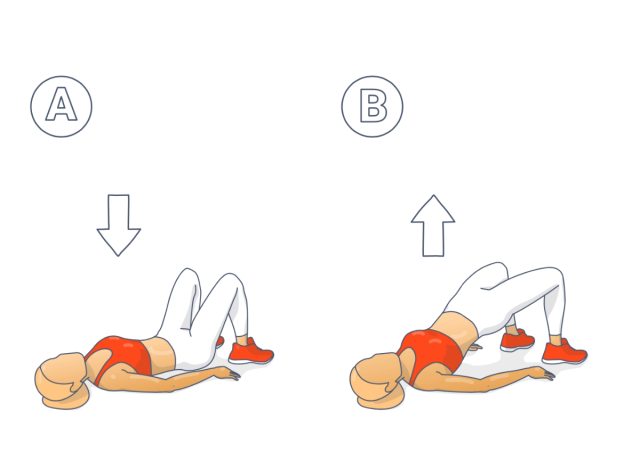
The classic glute bridge exercise offers versatility in its execution. Whether using just your body weight, incorporating dumbbells, or adding heavier resistance with a barbell, there are various ways to perform this movement. It's an excellent entry point for beginners or an effective activation exercise during warm-ups and daily maintenance routines.
To perform glute bridges, lie on your back with your knees bent and your feet flat, hip-width apart. Squeeze your core, then push your hips up, squeezing your glutes at the top, maintaining a straight line from your shoulders to your knees. Slowly lower your hips back down, focusing on controlled movement. Keep your core engaged, and avoid excessive arching when completing your reps. Coach tip: Pause at the top of each rep for two to three seconds to reinforce glute development.
Compete three sets of eight to 12 reps with 90 seconds of rest between sets.
2. Single-leg Glute Bridges
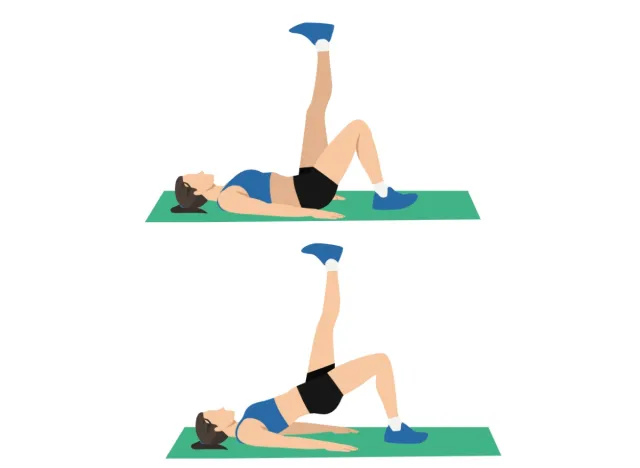
Single-leg glute bridges provide a unilateral exercise option that is particularly effective for preventing imbalances in the lower body. Focusing on one leg at a time, you target each side independently, helping to address any discrepancies in strength or stability. The single-leg variation naturally increases the intensity of the exercise, leading to better initial strength gains.
Begin face up with your knees bent and your feet flat and shoulder-width apart. Ensure your shins are vertical and your ankles and knees are stacked. Slightly tilt your pelvis toward your chin to brace your abs, and raise one leg off the floor, flexing about 90 degrees at the hip. Push your heel through the floor, and drive the hips up, squeezing the glutes at the top. Complete all reps on one side, then switch and repeat.
Perform three sets of eight to 15 reps per side with 90 seconds of rest between sets.
3. Hip Thrusts
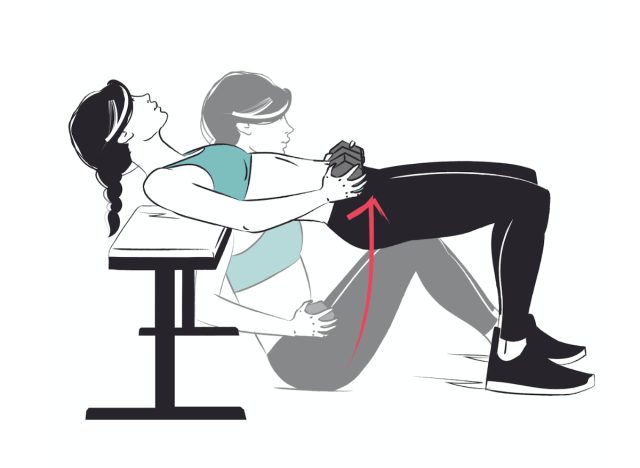
To perform hip thrusts, you'll need a box or bench to elevate your position. This increased range of motion is excellent for building muscle mass and strength. Whether you're a beginner or advanced, you can use bodyweight, dumbbells, or barbells, making this exercise versatile for any fitness level.
Sit on the ground with your upper back against a bench or box and both feet planted firmly on the floor. Optionally, add resistance with a weight on your hips. Press through your feet, driving up to lift your hips, forming a straight line from your shoulders to your knee, then lower back down.
Complete three sets of eight to 15 reps with 90 seconds of rest between sets.
Workout #2: Dumbbell Rows
Dumbbell rows offer numerous benefits for strength, stability, and preserving muscle mass as you age. Targeting muscles in the back, shoulders, and arms improves overall upper-body strength, which is essential for maintaining functional abilities as you age. Additionally, dumbbell rows promote stability by engaging core muscles to support the spine and improve posture, reducing the risk of falls and injuries.
1. Bent-over Dumbbell Rows
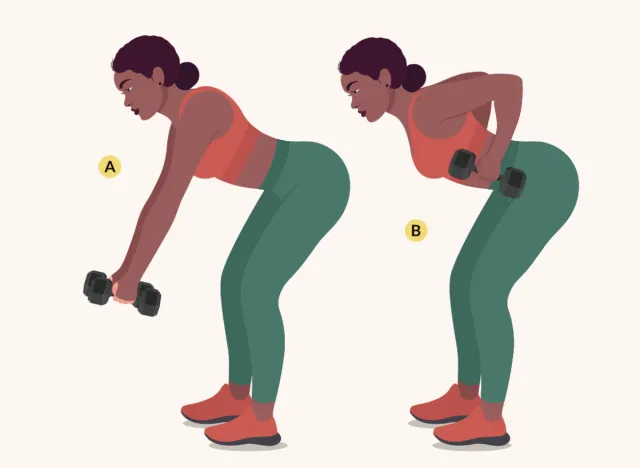
Dumbbell bent-over rows offer significant benefits for aging individuals looking to maintain strength and functionality. This dynamic exercise targets the upper back, lats, and biceps while engaging the core for stability. Dumbbell rows help counteract age-related muscle loss and improve overall posture by promoting muscle activation and spinal support.
Stand with your feet shoulder-width apart to perform dumbbell bent-over rows, holding a dumbbell in each hand. Hinge at the hips, keeping your back straight and your chest up, with your torso at a 45-degree angle (close to parallel with the floor). Engage your core to stabilize and prevent rotation. Pull the dumbbell toward your hip, keeping your elbow close to your body, then lower it with control.
Complete three to four sets of eight to 15 reps with 60 to 90 seconds of rest between sets.
2. Alternating Bent-over Rows
Alternating bent-over rows are great for strengthening your back as you age. This exercise engages multiple muscle groups, including your back and biceps, while also involving your abs for stability. The alternating motion within each set adds intensity, maximizing your workout efficiency and effectiveness.
To execute the alternating bent-over dumbbell row exercise, stand with your feet hip-width apart, and hinge forward with a flat back until your upper body is nearly parallel to the floor. Hold a dumbbell in each hand with both hands in front, allowing your arms to straighten. Pull your elbows up along the sides, engaging the back muscles in a rowing motion. Slowly lower the dumbbell to the starting position. Alternate sides, ensuring your core stays tight the whole time.
Perform three sets of six to 15 reps per side with 90 seconds of rest between sets.
3. Staggered-stance One-arm Dumbbell Rows
Staggered stance dumbbell rows combine the benefits of rows, improving muscle mass and strength in the upper back, lats, and biceps with the challenge of engaging your core to avoid excessive rotation and bracing the torso.
Stand with your feet shoulder-width apart, holding a dumbbell in one hand. Step back with the same-side foot, creating a staggered stance, and slightly bend at the hips and knees. Lower the dumbbell, then row it toward your mid back. Lower the dumbbell with control, and repeat. Keep your non-rowing hand away from your body, and rely on your core muscles to engage.
Complete three to four sets of eight to 12 reps per side with 90 seconds of rest between sets.
Workout #3: Squats
Next up in my top-recommended workouts to do in your 60s is all about squats. Selecting any squat variation—such as goblet, back, or front squats—offers a highly effective workout with multiple benefits as we age. Squats promote functional movement patterns, enhance core strength, and boost full-body mobility. You can elevate your workout by incorporating tempos and pauses, increasing intensity without adding more weight. If performing full-depth squats is difficult, diversify your routine with box squats. Adjust the box height as your strength and mobility progress to continue challenging yourself.
1. Box Squats
Box squats are an excellent variation, particularly for beginners, as they help learn the basic movement pattern while enhancing mobility. They also offer a chance to focus on building strength—especially if mobility restricts your ability to perform full-depth squats or control heavier weights.
Position a sturdy box or bench behind you at a height where your thighs are parallel to the ground when seated. Stand with your feet shoulder-width apart, toes slightly turned out. Keep your core engaged and your chest up. Slowly lower yourself by pushing your hips back and lightly touching the box with your glutes. Pause briefly, then drive through your heels to stand up, fully extending your hips and knees.
Perform three sets of six to 12 reps with 90 seconds of rest between sets.
2. Full-depth Squats
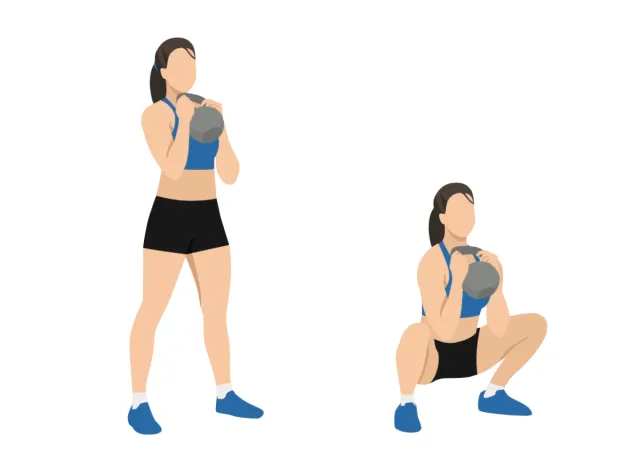
Performing full-depth squats helps improve mobility by allowing you to work through a greater range of motion. This engagement of a wider range helps activate more muscle groups, enhance core stability, and establish a functional movement pattern.
Stand with your feet hip-width apart, toes forward, and maintain an upright chest and engaged core. Hold a kettlebell or dumbbell in front of your chest to perform a goblet squat, or use a barbell for back squats. Hinge your hips back, and lower into a squat. Lower to a desired depth, then push through your whole foot to return to the starting position.
Complete three sets of six to eight reps with 90 seconds of rest between sets.
3. Squat Jumps
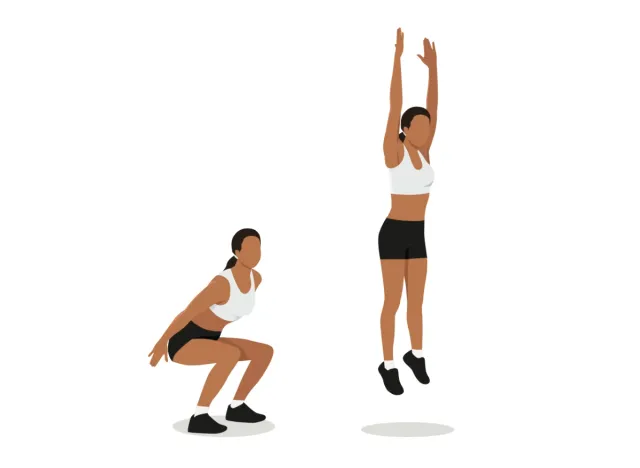
Squat jumps are effective for training power and explosiveness, but they are often overlooked in exercise routines as we age.
Start in a hip-width stance with your toes slightly turned out to perform squat jumps. Lower into a quarter squat position as you reach your arms down to your sides. Then, explosively jump upward, extending your hips and legs fully as you quickly reach your arms overhead. Land softly, and immediately return to the squat position for the next repetition.
Perform three sets of five to eight reps with 90 seconds of rest between sets.
Workout #4: Pushups
As you progress in age, prioritizing movements that engage your body weight becomes paramount for sustaining health and vitality. Among these exercises, pushups are a fundamental inclusion in any fitness regimen—especially for those in their 60s. While traditional weightlifting with barbells, dumbbells, or kettlebells holds its importance, harnessing one's body weight resistance becomes increasingly beneficial as we age.
1. Assisted (Kneeling) Pushups
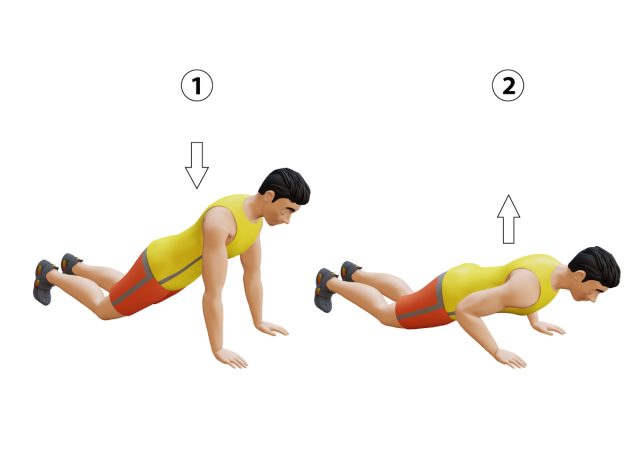
Kneeling pushups offer a safe and effective workout option. They allow for gradual progression in strength and endurance while minimizing joint stress. By performing pushups from a kneeling position, individuals can reduce the intensity of the exercise while still engaging key muscle groups in the chest, shoulders, and arms.
Start kneeling on the floor with your hands slightly wider than shoulder-width apart. Keep your back straight and your core engaged as you lower your chest toward the ground by bending your elbows. Push through your palms to return to the starting position. Focus on controlled movements, and adjust the intensity by varying your hand placement.
Complete three sets of six to 12 reps with 90 seconds of rest between sets.
2. Traditional Pushups
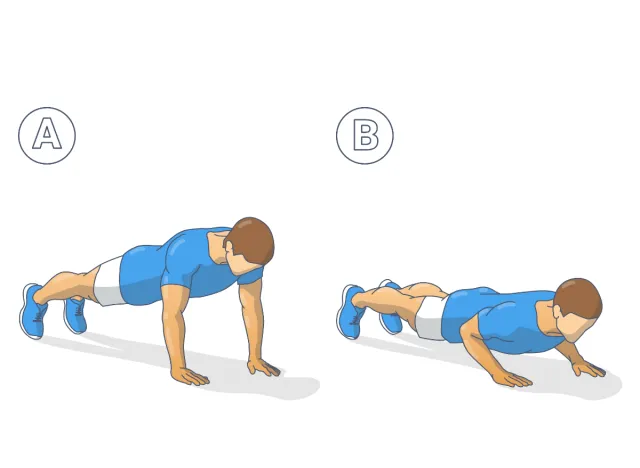
Pushups effectively target the pecs, shoulders, triceps, and core muscles. They play a crucial role in facilitating movements such as getting up and down from the ground, making them essential for a well-rounded fitness routine.
Start by positioning your hands beneath your shoulders and in a plank position, ensuring your arms are straight. Squeeze your core, lower your body to the ground, pause, and push back up. Repeat for the desired sets and reps, prioritizing form.
Perform three to four sets of six to 12 reps, allowing 90 seconds of rest between sets. If you find it challenging to meet the designated rep range, push yourself to complete as many reps as possible and then conclude the set with negatives—controlled lowering reps starting from the top.
3. Pushups with Shoulder Taps
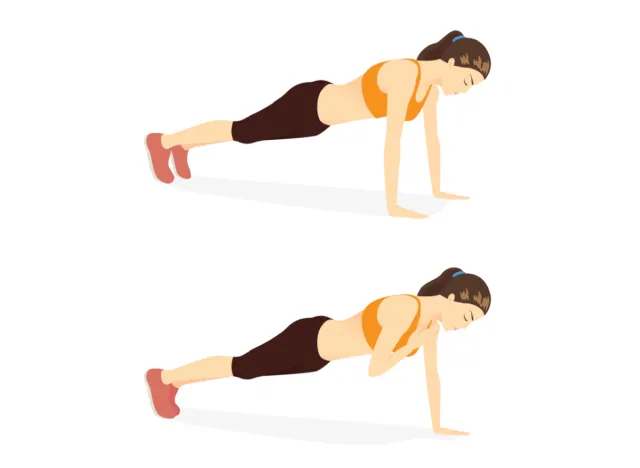
Pushups with shoulder taps offer an excellent way to strengthen your upper body and core as you age. This exercise combines the benefits of traditional pushups with the added challenge of tapping alternate shoulders between reps, helping to improve shoulder joint stability.
Start in a plank position, and perform a pushup with shoulder taps. Next, bend your arms, and lower your chest as low as possible with control, then push back up. A big key here is moving your body up and down, maintaining a tight plank position while continuously squeezing your abs. Alternate tapping shoulders with each pushup, engaging your core for a slim and toned waistline.
Complete three sets of six to 12 reps with 90 seconds rest between each set.
Workout #5: Cardio
This list of workouts to do in your 60s wraps up with cardio. In this workout, you can select your preferred cardio machine or activity, such as jogging, running, the treadmill, ski erg, rower, or any other option. I'll guide you through the intervals, enabling you to customize the workout to suit your preferences and equipment availability.
You can complete each session on the same machine, or switch to different equipment for each interval workout. This variety ensures a well-rounded cardiovascular workout essential for maintaining heart health as you age.
1. Short Intervals
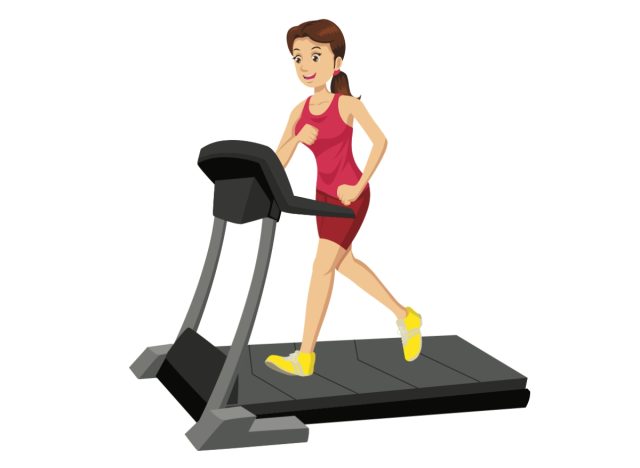
Short intervals boost your anaerobic capacity, enhancing endurance performance as you age. These intervals consist of brief bursts of high-intensity effort and short rest periods. It's essential to allow your heart rate to decrease and grant yourself a few minutes of recovery before transitioning to moderate intervals. Incorporating these intervals into your cardio routine introduces variety, keeping workouts engaging and effective while promoting heart health and endurance.
Complete five to 10 rounds of 20 seconds of higher-intensity work followed by 40 to 60 seconds of very low-intensity work.
2. Moderate Intervals
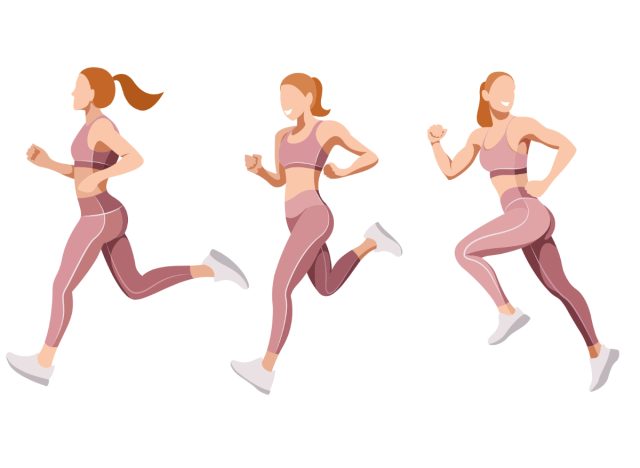
Moderate intervals blend the high intensity of short-effort intervals with the benefits of low-intensity steady-state workouts.
Perform eight to 12 rounds of 30 seconds of moderate-intensity work with 30 seconds of low-intensity rest periods.
3. Low-Intensity Steady State
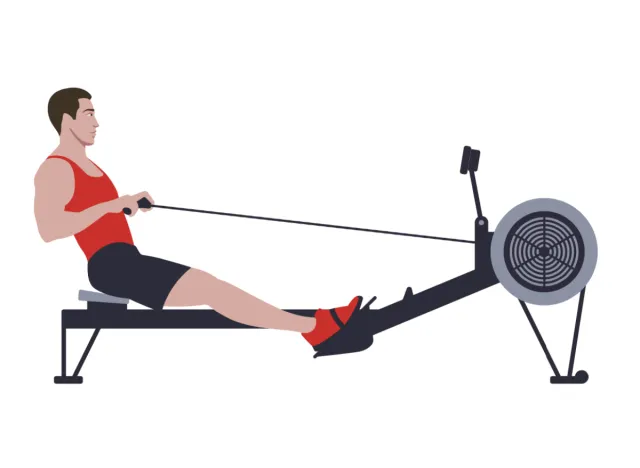
A low-intensity steady state is one of the most effective ways to use cardio to improve heart health and your cardiovascular system's performance. It's pretty straightforward: Maintain a low to moderate intensity throughout the workout.
Complete one to two rounds of 10 to 15 minutes of low to moderate-intensity work. If you complete two rounds, rest for three to five minutes between each round.









